Micro-documentaries are brief yet powerful films designed for social media, combining engaging narratives with striking visuals to captivate audiences. By focusing on concise storytelling and emotional resonance, these films can effectively convey messages and foster interaction. To maximize their impact, it’s essential to tailor content for specific platforms and engage with viewers actively.
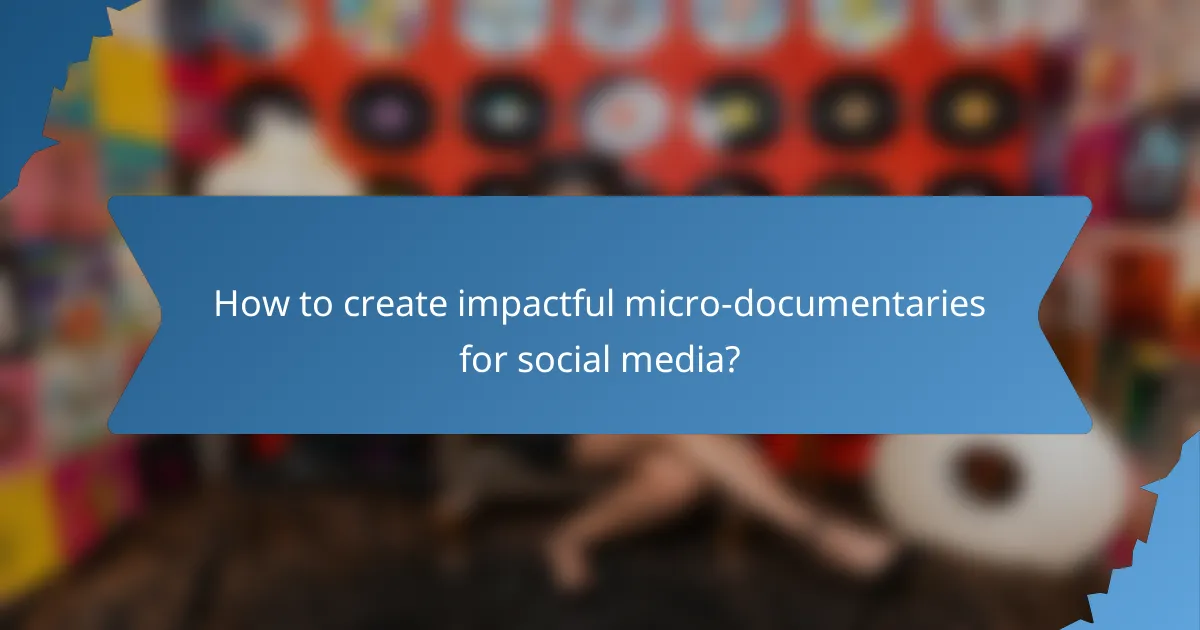
How to create impactful micro-documentaries for social media?
Creating impactful micro-documentaries for social media involves concise storytelling that resonates with viewers. Focus on engaging narratives, strong visuals, and audience interaction to maximize reach and effectiveness.
Focus on storytelling techniques
Effective storytelling is the backbone of a compelling micro-documentary. Begin with a clear message or theme, and structure your narrative to include a beginning, middle, and end. Aim for emotional resonance by incorporating personal stories or relatable experiences.
Utilize techniques such as conflict and resolution to keep viewers engaged. Short, punchy segments that highlight key moments can help maintain attention in a fast-paced social media environment.
Utilize engaging visuals
Visuals play a crucial role in capturing attention and conveying your message quickly. Use high-quality images and video clips that complement your story and evoke emotions. Consider incorporating animations or graphics to illustrate complex ideas simply.
Keep in mind that social media platforms often prioritize visually striking content. Aim for bright colors and dynamic compositions to stand out in crowded feeds.
Incorporate audience feedback
Engaging with your audience can enhance the impact of your micro-documentary. Encourage viewers to share their thoughts and reactions through comments or polls. This feedback can provide valuable insights into what resonates and what doesn’t.
Consider using audience suggestions to shape future content. This not only builds community but also ensures your documentaries remain relevant and appealing to your target demographic.
Optimize for mobile viewing
Since most social media consumption happens on mobile devices, optimizing your micro-documentary for mobile viewing is essential. Use vertical or square formats to fit screens better and ensure text is legible without zooming.
Keep your videos short, ideally under a minute, to cater to shorter attention spans. Test your content on various devices to ensure a seamless viewing experience across platforms.
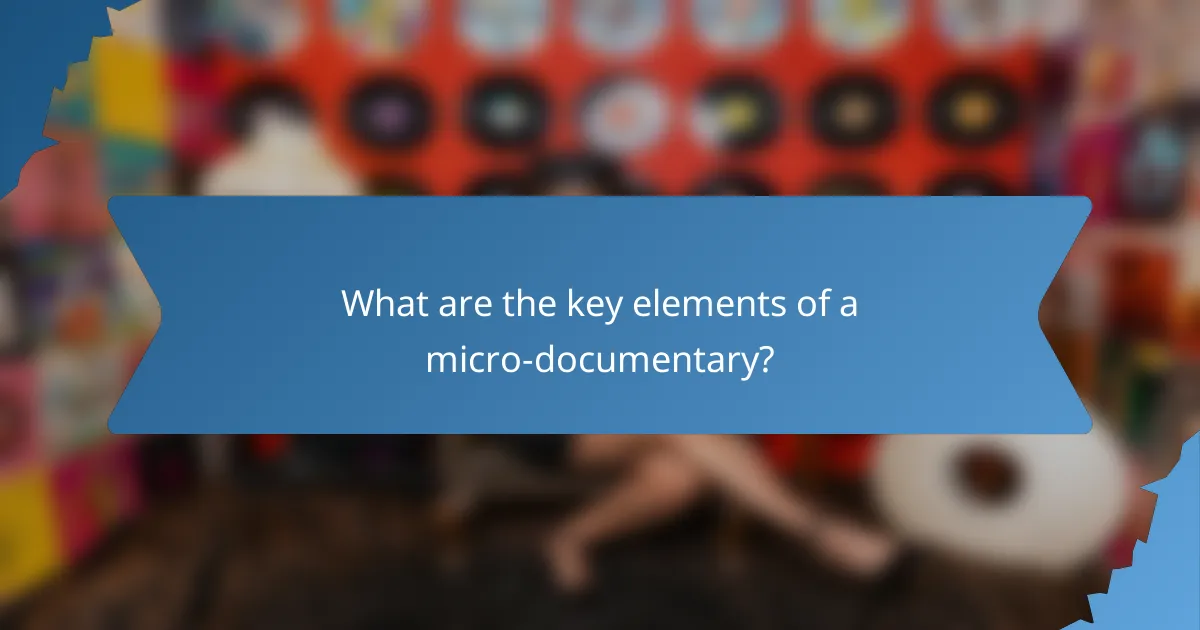
What are the key elements of a micro-documentary?
Micro-documentaries are short, impactful films that tell a story in a concise format, often tailored for social media. Key elements include a clear narrative structure, high production quality, and the ability to evoke strong emotions in viewers.
Concise narrative structure
A concise narrative structure is essential for micro-documentaries, typically lasting from one to five minutes. This brevity requires a focused storyline that captures the essence of the subject without unnecessary details.
To achieve this, start with a strong hook, followed by a clear progression of ideas, and conclude with a compelling resolution. Avoid complex plots; instead, aim for a straightforward message that resonates quickly with the audience.
High-quality production value
High production value enhances the viewer’s experience and credibility of the micro-documentary. This includes good lighting, clear audio, and professional editing, which can significantly impact engagement levels.
Investing in quality equipment or skilled professionals can make a difference. Even with limited budgets, focus on clear visuals and sound, as poor quality can detract from the storytelling.
Strong emotional connection
Creating a strong emotional connection is vital for micro-documentaries to leave a lasting impression. This can be achieved through relatable characters, authentic stories, and evocative visuals that resonate with viewers’ feelings.
Consider using personal anecdotes or testimonials that highlight universal themes such as struggle, triumph, or community. Engaging the audience emotionally encourages sharing and discussion, which is crucial for social media impact.
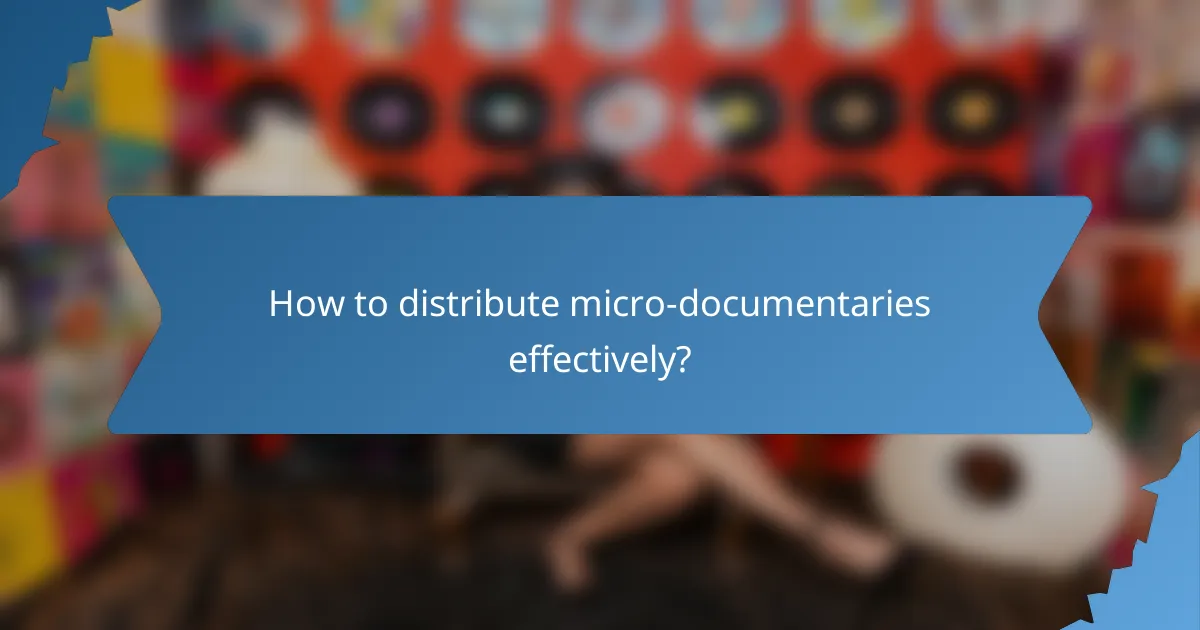
How to distribute micro-documentaries effectively?
To distribute micro-documentaries effectively, focus on utilizing social media platforms, engaging with audiences, and leveraging influencers to maximize reach and impact. Tailoring content for each platform enhances visibility and encourages sharing.
Leverage social media platforms
Social media platforms are essential for distributing micro-documentaries due to their vast user bases and sharing capabilities. Focus on platforms like Instagram, TikTok, and Facebook, where short, engaging video content thrives.
Consider the unique features of each platform; for instance, Instagram Stories and Reels allow for quick, captivating snippets, while TikTok’s algorithm favors creative and entertaining content. Posting at optimal times can also increase engagement.
Utilize hashtags for visibility
Using relevant hashtags can significantly enhance the visibility of micro-documentaries. Research trending hashtags related to your content and incorporate them into your posts to reach a broader audience.
Mix popular hashtags with niche ones to target specific communities. For example, if your documentary focuses on environmental issues, use hashtags like #EcoDocumentary alongside more general ones like #DocumentaryFilm. This strategy can attract both general viewers and those specifically interested in your topic.
Engage with influencers
Collaborating with influencers can amplify the reach of your micro-documentaries. Identify influencers whose values align with your content and who have an engaged following in your niche.
Consider offering them exclusive previews or opportunities to co-create content. This not only expands your audience but also adds credibility to your documentary. Remember to maintain authentic relationships with influencers to foster genuine promotion.
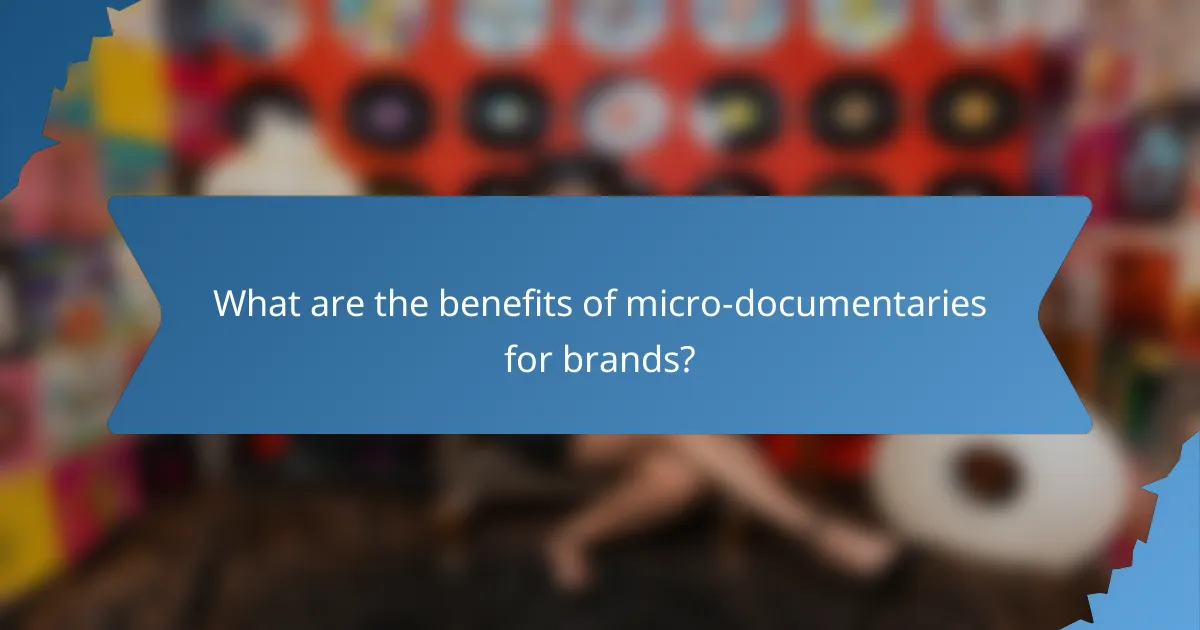
What are the benefits of micro-documentaries for brands?
Micro-documentaries offer brands a powerful tool for storytelling, enabling them to connect with audiences in a concise and impactful way. These short visual narratives can enhance brand visibility, foster engagement, and convey messages effectively across social media platforms.
Increased audience engagement
Micro-documentaries capture attention quickly, often leading to higher engagement rates compared to traditional content. By presenting stories in a visually appealing format, brands can evoke emotions and encourage viewers to share their content, amplifying reach.
Consider using interactive elements or calls to action within these documentaries to further boost engagement. For instance, prompting viewers to comment or share their experiences can create a community around the brand.
Enhanced brand storytelling
Micro-documentaries allow brands to tell their stories in a compelling way, focusing on authenticity and relatability. By showcasing real people, experiences, or challenges, brands can build a deeper connection with their audience.
Utilizing a narrative arc—introduction, conflict, resolution—can make the story more engaging. For example, a brand might highlight a customer’s journey with their product, illustrating its impact on their life.
Cost-effective advertising
Creating micro-documentaries can be more budget-friendly than traditional advertising methods. With advancements in technology, brands can produce high-quality content with minimal resources, often using smartphones and basic editing software.
Additionally, these short films can be repurposed across various platforms, maximizing return on investment. Brands should consider allocating a portion of their marketing budget to micro-documentaries to leverage their cost-effectiveness.
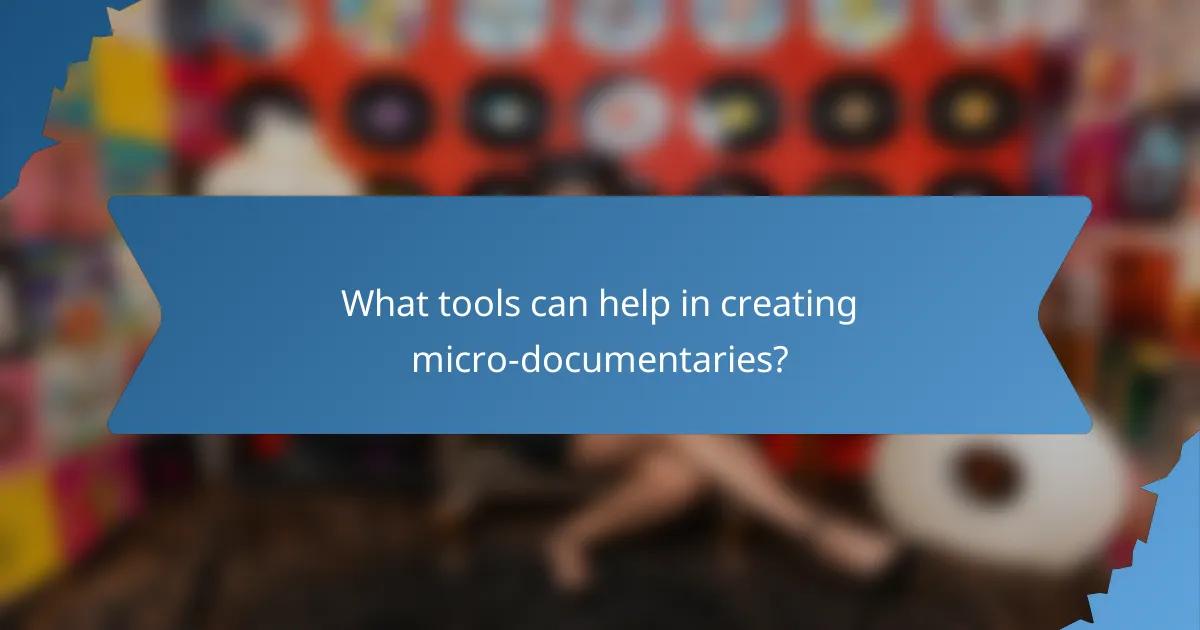
What tools can help in creating micro-documentaries?
Creating micro-documentaries requires a combination of editing software, graphic design tools, and advanced features for polished storytelling. The right tools can streamline the production process, enhance visual appeal, and ensure accessibility for social media platforms.
Adobe Premiere Pro for editing
Adobe Premiere Pro is a leading video editing software that offers a comprehensive suite of tools for crafting micro-documentaries. Its intuitive interface allows users to edit footage, add transitions, and incorporate audio seamlessly, making it suitable for both beginners and experienced editors.
When using Premiere Pro, consider utilizing its built-in templates for quick edits and effects. This can save time and help maintain a professional look. Additionally, exporting in formats optimized for social media, such as MP4, ensures your content is accessible across various platforms.
Canva for graphics
Canva is an excellent tool for creating engaging graphics and visual elements for micro-documentaries. With a user-friendly drag-and-drop interface, it allows users to design thumbnails, social media posts, and infographics that complement their video content.
Leverage Canva’s extensive library of templates and stock images to enhance your storytelling. Keep in mind that consistent branding across graphics can improve viewer recognition and engagement. Export your designs in high-resolution formats to ensure clarity on all devices.
Final Cut Pro for advanced features
Final Cut Pro is a powerful editing software favored by professionals for its advanced features and speed. It offers magnetic timelines and multi-cam editing, making it ideal for complex micro-documentary projects that require precise synchronization of audio and video.
Utilize Final Cut Pro’s color grading tools to enhance the visual quality of your micro-documentaries. Additionally, its support for 360-degree video can add an immersive element to your storytelling. Ensure your final exports are optimized for the platforms you intend to use, balancing quality and file size effectively.
